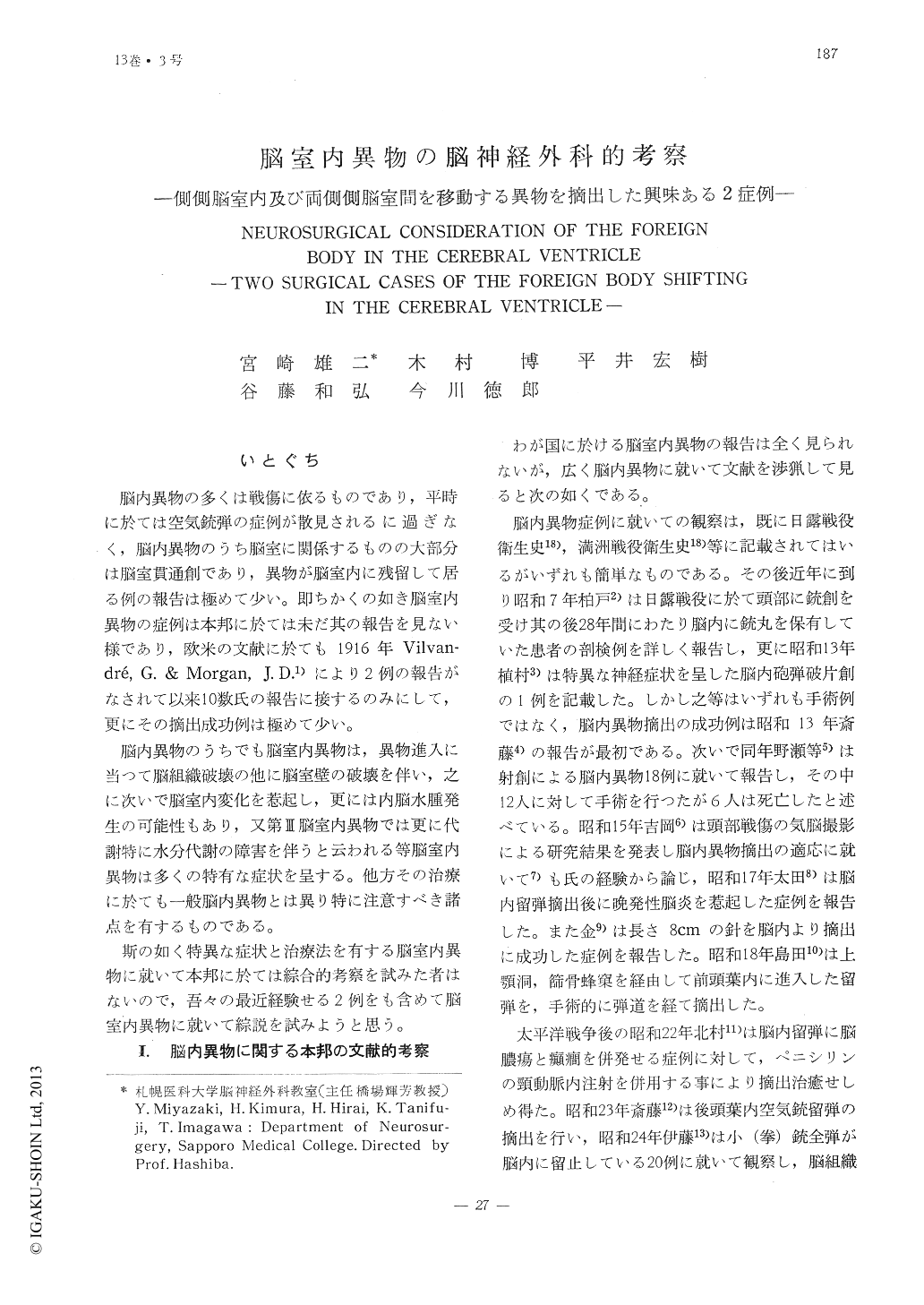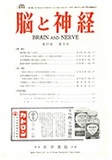Japanese
English
- 有料閲覧
- Abstract 文献概要
- 1ページ目 Look Inside
いとぐち
脳内異物の多くは戦傷に依るものであり,平時に於ては空気銃弾の症例が散見されるに過ぎなく,脳内異物のうち脳室に関係するものの大部分は脳室貫通創であり,異物が脳室内に残留して居る例の報告は極めて少い。即ちかくの如き脳室内異物の症例は本邦に於ては未だ其の報告を見ない様であり,欧米の文献に於ても1916年Vilvan-dre,G.&Morgan,J.D.1)により2例の報告がなされて以来10数氏の報告に接するのみにして,更にその摘出成功例は極めて少い。
脳内異物のうちでも脳室内異物は,異物進入に当つて脳組織破壊の他に脳室壁の破壊を伴い,之に次いで脳室内変化を惹起し,更には内脳水腫発生の可能性もあり,又第III脳室内異物では更に代謝特に水分代謝の障害を伴うと云われる等脳室内異物は多くの特有な症状を呈する。他方その治療に於ても一般脳内異物とは異り特に注意すべき諸点を有するものである。
Among reports on intracranial foreign bod-ies literature reveals a marked lack in reportson foreign bodies in the cerebral ventricle.None were seen in literature in Japan with amore ten-odd reports in foreign countries.
However, in view of the importance of theproblem attempts have been made to graspthe problem of foreign bodies in the cerebralventricle as a whole from a neurosurgicalpoint of view.
This was done with the following in mind : In addition to symptoms accompanied by da-mage to brain tissue by the penetration offoreign bodies into the cerebral ventricle, asa result of damage to the ventricle wall andfrom stimulation by the foreign body, hyper-thermia, meningeal symptoms or signs andinternal hydrocephalus appears.
Further in the case of foreign bodies inthe 3rd ventricle, metabolic disturbances (es-pecially water metbolism) etc is seen. Thus, it may be said that a considera ble charact-eristic picture is seen.
Likewise, in the removal of the foreignbodies from the fact that the foreign bodytend to move or shift, various problems enterinto the consideration. Hence the followingsteps were taken from neurosurgical point ofview.

Copyright © 1961, Igaku-Shoin Ltd. All rights reserved.


